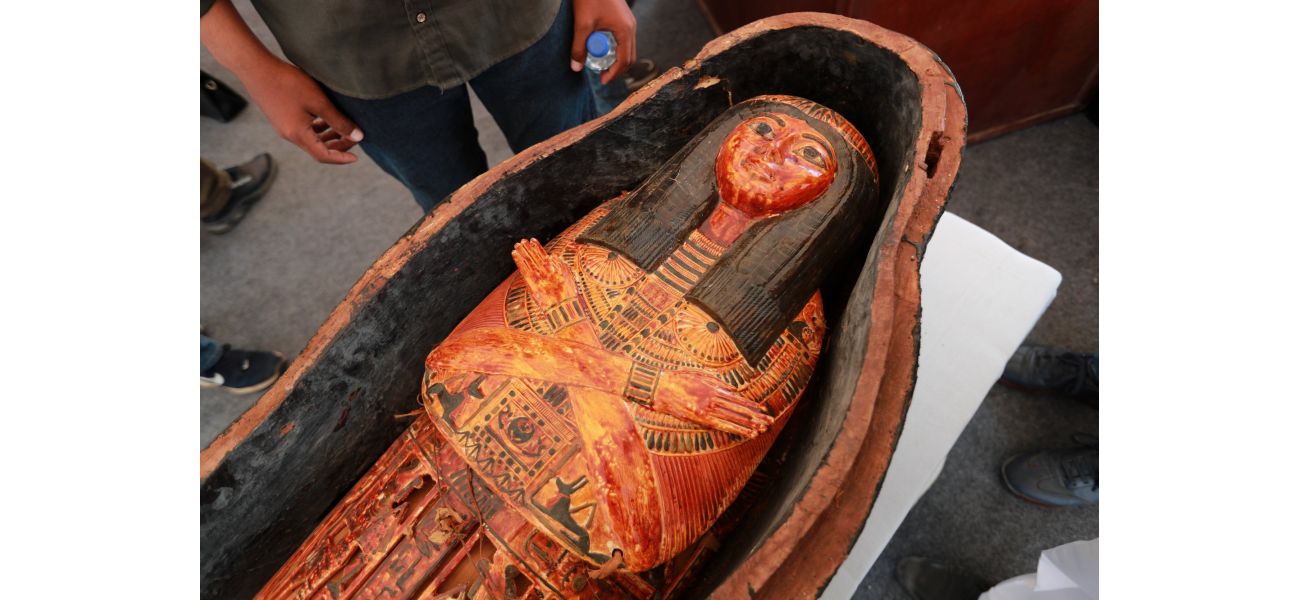Ancient Egyptian mummies' scent finally revealed.
5,000-year-old mummies have a pleasant scent?
February 10th 2025.

Did you know that 5,000-year-old mummies have a pleasant smell? A recent study has uncovered the distinctive scents of ancient Egyptian mummies, and the results may surprise you. The researchers, from UCL and the University of Ljubljana, delved into the intricacies of mummification practices in this ancient civilization and discovered that the bodies emitted a woody, spicy, and sweet aroma. This new information not only sheds light on the materials used in mummification, but also provides insights into how these practices and ingredients evolved over time. It also reveals details about how museums have preserved these remains for generations to come.
Lead author Professor Matija Strlič shared, "For years, the smell of mummified bodies has fascinated both experts and the general public. However, until now, there has been no comprehensive scientific study that combines chemical analysis with human perception." This groundbreaking research not only helps us better understand the ancient embalming methods, but also adds another layer of knowledge to enhance museum exhibitions of mummies.
To uncover the scents of these ancient bodies, the researchers used a gas chromatograph to measure and identify the chemicals emitted by the mummies on display at the Egyptian Museum in Cairo. They discovered that an array of spices and balms were used in the mummification process. Additionally, they enlisted the help of a panel of trained individuals to describe the smells based on three factors: quality, intensity, and pleasantness. This allowed them to determine if the smells came from the actual mummy, the conservation products used, or the molds and bacteria that may have formed after the body's decay.
This new insight into the smells of mummies could pave the way for museums to create "smellscapes" to better educate visitors about the history and time periods of different objects. In fact, the research team plans to produce a contemporary reconstruction of the smell of ancient mummies, allowing audiences to experience this important aspect of Egyptian heritage and learn more about the embalming practices of the time.
It's worth noting that these mummies were often hidden under multiple layers of coffins, highlighting the significance and care that was put into their preservation. Co-author Professor Ali Abdelhalim, director of the Egyptian Museum in Cairo, explained, "To the ancient Egyptians, mummification was a crucial mortuary practice aimed at preserving the body and soul for the afterlife. This involved a detailed ritual of embalming, using oils, waxes, and balms." The practice evolved over time, and by identifying the different techniques and materials used, we can gain insights into the era, location, and social status of the mummified individual.
Despite being over 5,000 years old, those who have worked with these mummies have described the scents as "pleasant." This could be due to the use of resins and oils such as pine, cedar, and juniper, as well as the inclusion of myrrh and frankincense to add fragrance to the bodies. As we continue to uncover more about these ancient civilizations, we are also learning about their customs and traditions, providing a greater understanding and appreciation for our shared human history.
Lead author Professor Matija Strlič shared, "For years, the smell of mummified bodies has fascinated both experts and the general public. However, until now, there has been no comprehensive scientific study that combines chemical analysis with human perception." This groundbreaking research not only helps us better understand the ancient embalming methods, but also adds another layer of knowledge to enhance museum exhibitions of mummies.
To uncover the scents of these ancient bodies, the researchers used a gas chromatograph to measure and identify the chemicals emitted by the mummies on display at the Egyptian Museum in Cairo. They discovered that an array of spices and balms were used in the mummification process. Additionally, they enlisted the help of a panel of trained individuals to describe the smells based on three factors: quality, intensity, and pleasantness. This allowed them to determine if the smells came from the actual mummy, the conservation products used, or the molds and bacteria that may have formed after the body's decay.
This new insight into the smells of mummies could pave the way for museums to create "smellscapes" to better educate visitors about the history and time periods of different objects. In fact, the research team plans to produce a contemporary reconstruction of the smell of ancient mummies, allowing audiences to experience this important aspect of Egyptian heritage and learn more about the embalming practices of the time.
It's worth noting that these mummies were often hidden under multiple layers of coffins, highlighting the significance and care that was put into their preservation. Co-author Professor Ali Abdelhalim, director of the Egyptian Museum in Cairo, explained, "To the ancient Egyptians, mummification was a crucial mortuary practice aimed at preserving the body and soul for the afterlife. This involved a detailed ritual of embalming, using oils, waxes, and balms." The practice evolved over time, and by identifying the different techniques and materials used, we can gain insights into the era, location, and social status of the mummified individual.
Despite being over 5,000 years old, those who have worked with these mummies have described the scents as "pleasant." This could be due to the use of resins and oils such as pine, cedar, and juniper, as well as the inclusion of myrrh and frankincense to add fragrance to the bodies. As we continue to uncover more about these ancient civilizations, we are also learning about their customs and traditions, providing a greater understanding and appreciation for our shared human history.
[This article has been trending online recently and has been generated with AI. Your feed is customized.]
[Generative AI is experimental.]
0
0
Submit Comment





